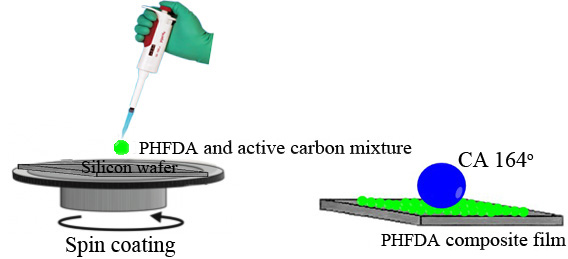JOURNAL 1403
Organic Communications
Year: 2019 Issue: 4 October-December
p.222 - 226
Viewed 3965 times.
GRAPHICAL ABSTRACT

ABSTRACT
We describe the formation of superhydrophobic surfaces by controlling the surface roughness using some simple processing methods, such as annealing at 120 °C, freeze-drying at -40 °C and composite film preparation. The root-mean-square (rms) roughness and the water contact angle values of untreated poly(3,3,4,4,5,5,6,6,7,7,8,8,9,9,10,10,11,11,12,12-heneicosaffluorododecyl acrylate) (PHFDA) film prepared on silicon substrate using spin-coating technique were about 1.35 nm and θA/θR = 125o/103o , respectively. On the other hand, the annealed film at 120 °C and the freeze-dried film at -40 °C with only a small increase in the rms roughness and the water contact angle values were 2.05 nm and θA/θR = 126o/111o , and 2.28 nm and θA/θR = 130o/123o, respectively. However, these values for the composite film composed of PHFDA and active carbon were 2.54 nm and θA/θR = 165o/164o, respectively. This method can be applied to various surfaces as long as the composites composed of nanoparticles and polymeric materials do not cause any aggregation in spin-coating.
KEYWORDS- Superhydrophobic surfaces
- surface roughness
- composite film
- active carbon
- spin-coating